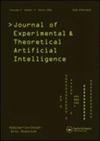Simultaneous localisation and mapping for autonomous underwater vehicle using a combined smooth variable structure filter and extended kalman filter
IF 1.7
4区 计算机科学
Q3 COMPUTER SCIENCE, ARTIFICIAL INTELLIGENCE
Journal of Experimental & Theoretical Artificial Intelligence
Pub Date : 2021-04-14
DOI:10.1080/0952813X.2021.1908430
引用次数: 6
Abstract
ABSTRACT Localisation technology is one of the most important challenges of underwater vehicle applications that accomplish any scheduled mission in the complex underwater environment. Currently, the Simultaneous Localisation and Mapping (SLAM) of the Autonomous Underwater Vehicle (AUV) is becoming a hotspot research. AUVs have, only recently, received more attention and underwater platforms continue to dominate the research. To ensure the success of an accurate AUV localisation mission, the problem of drift on the estimated trajectory must be overcome. In order to improve the positioning accuracy of the AUV localisation, a new filter referred to as the Adaptive Smooth Variable Structure Filter (ASVSF) based SLAM positioning algorithm is proposed. To verify the improvement of this filter, the combined SVSF and the Extended Kalman Filter (EKF) are presented. Experimental results based on dataset for underwater SLAM algorithm show the accuracy and stability of the ASVSF AUV localisation position. Several experiments were tested under real-life conditions with an autonomous underwater vehicle based on different filters. The results of these filters have been compared based on Root Mean Squared Error (RMSE) and in terms of localisation and map building errors. It is shown that the adaptive SVSF-SLAM strategy obtains the best performance compared to other algorithms.基于光滑变结构滤波器和扩展卡尔曼滤波器的自主水下航行器同步定位与映射
定位技术是水下航行器在复杂的水下环境中完成预定任务的最重要挑战之一。目前,自主水下航行器(AUV)的同步定位与测绘(SLAM)是一个研究热点。直到最近,auv才受到更多的关注,水下平台继续主导着研究。为了确保AUV精确定位任务的成功,必须克服估计轨迹上的漂移问题。为了提高水下航行器定位精度,提出了一种基于自适应平滑变结构滤波器(ASVSF)的SLAM定位算法。为了验证该滤波器的改进,提出了SVSF和扩展卡尔曼滤波器(EKF)的组合。基于水下SLAM算法数据集的实验结果表明,ASVSF水下航行器定位位置的准确性和稳定性。几个实验在现实条件下测试了基于不同过滤器的自主水下航行器。这些过滤器的结果已经根据均方根误差(RMSE)和定位和地图构建误差进行了比较。结果表明,自适应SVSF-SLAM策略与其他算法相比具有最佳的性能。
本文章由计算机程序翻译,如有差异,请以英文原文为准。
求助全文
约1分钟内获得全文
求助全文
来源期刊
CiteScore
6.10
自引率
4.50%
发文量
89
审稿时长
>12 weeks
期刊介绍:
Journal of Experimental & Theoretical Artificial Intelligence (JETAI) is a world leading journal dedicated to publishing high quality, rigorously reviewed, original papers in artificial intelligence (AI) research.
The journal features work in all subfields of AI research and accepts both theoretical and applied research. Topics covered include, but are not limited to, the following:
• cognitive science
• games
• learning
• knowledge representation
• memory and neural system modelling
• perception
• problem-solving

 求助内容:
求助内容: 应助结果提醒方式:
应助结果提醒方式:


